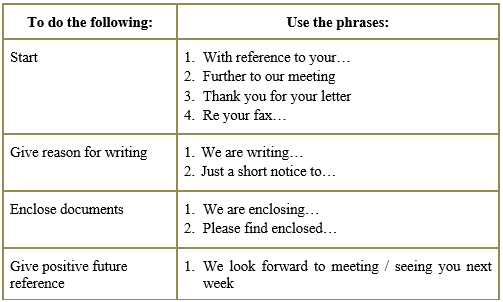Writing business letters
A memo
A memo (short for memorandum) is a form of communication within a com-pany. Therefore, it does not need addresses, salutations and complimentary closings. It may be used to send a short message to your boss or colleagues, to make a request, explain a procedure, call for a meeting or summarize a long report. Presently, in many cases e-mail is replacing the memo.
A memo consists of two parts:
The header (with four lines: To, From, Date, Subject);
The message.When a memo is addressed to more than one person, all the names appear in the To line. If the list of names is very long, write Distribution in the To line, and then, below the last line, write Distribution and follow it with an alphabetized list of names. Subject lines tell readers what the message is about and set the stage for reading with understanding.

Fig. 9.2. Example of a short memo
Memo writing generally follows the rules of letter writing; however, there may be more technical jargon and abbreviations in it as people receiving it are from the same company. Also, variety is present in headings as different companies choose different formats. Some people prefer to hand write their memos, although most are now typed and electronically sent. Signatures on memos are often only initials.
Table 9.1. Correspondence phrases

Writing business letters, emails or memos can be easy if you collect
some books and workbooks with templates of business correspondence. Remember
that business correspondence is a formal way of contact paying attention to
form and content. You make first impression on someone, therefore keep in mind
principles and tips of effective business writing. Remember that Practice makes perfect – the more you write,
the better your writing becomes.